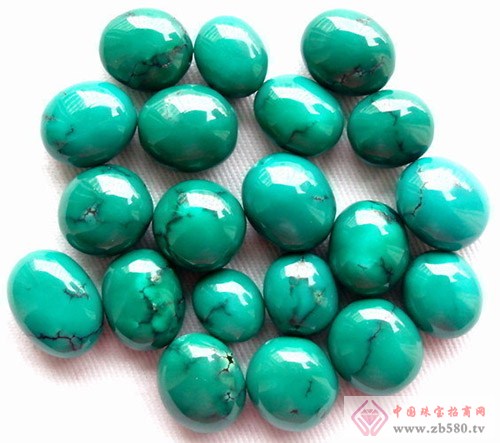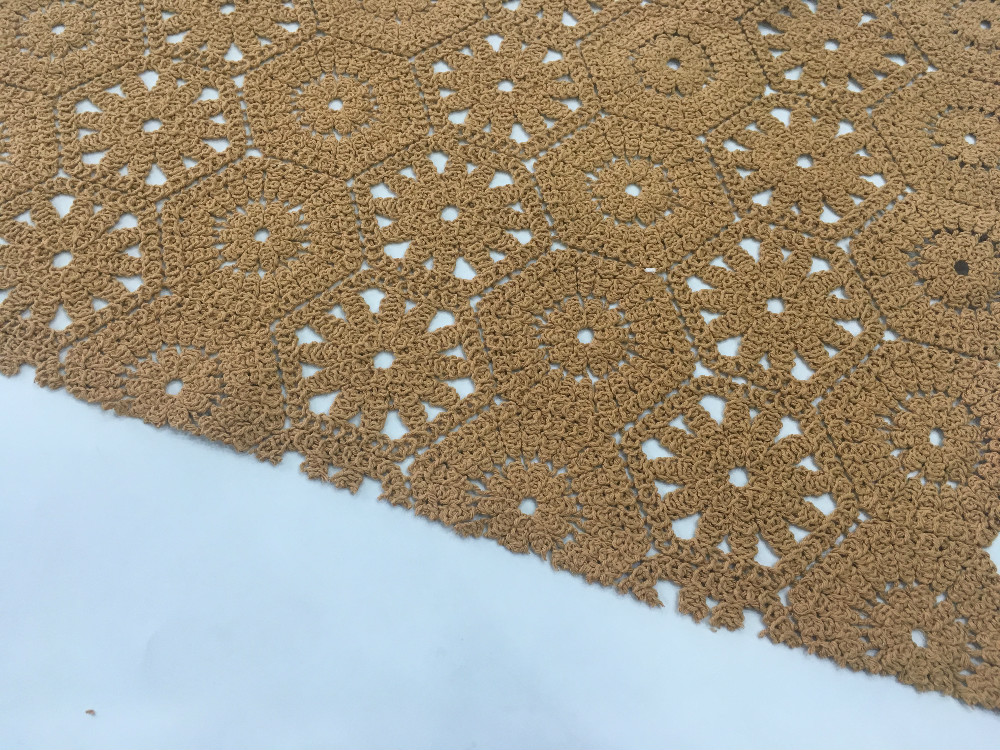
Turquoise is characterized by its color, opacity and luster. It is azure, lake blue or light blue, sometimes blue-green or dark green, and is easily mixed with a few translucent to opaque stones. The high-quality turquoise rough surface has a grease luster, the polished surface is glass luster, and it is translucent. If you carefully compare and understand, it is generally not too difficult to distinguish between turquoise and its imitations.
Despite this, turquoise may still be counterfeited by certain gemstones with similar appearances, especially after 1972, synthetic turquoise entered the international market, which brought certain difficulties to the identification of turquoise.
Synthetic turquoise, its chemical composition, structure, refractive index, relative density and other properties are almost the same as natural turquoise. But some people think that it can only be regarded as a kind of imitation, because this synthetic turquoise can see a spheroidal structure under the magnifying glass, like countless closely packed small spherulites, while natural products do not have this structure. Obviously, the microspheres are pressed together, at least in part by some type of adhesive.
However, familiar with the appearance, structure and physicochemical properties of turquoise, it is possible to distinguish between turquoise and natural mineral imitations. There are also many man-made materials, such as glass and plastic, that can be used to imitate turquoise. We can identify these glass and plastic imitations based on the following characteristics:
(1) Imitations usually have swirling colors (swirls) and small bubbles, which are important features at this time;
(2) The imitation substrate may be rough, rather than a polished underside like most turquoise;
(3) The imitation may have the same impression of the belt as the belt, or the surface has a hemispherical small groove, which is caused by the bubble rupture.
(4) Imitations usually have a lower refractive index, although occasionally they may be similar to the refractive index of turquoise;
(5) A bright feature of the imitation is that the fracture is glassy, ​​and the dense block-shaped turquoise fracture is grease luster. The difference in the gloss of the turquoise and imitation products is extremely obvious;
(6) Imitations may contain inclusions of impurities to mimic natural turquoise, but such impurities can even be washed away from the surface. The true impurities (iron wire) in the turquoise may be raised or recessed on the surface because it is a little bit softer or softer than the matrix;
(7) The relative density of the imitation product may be different from that of natural turquoise. In particular, the plastic imitation product usually has a relatively low relative density, so it is easy to distinguish. It is worth noting that repeated tests should be avoided when testing the relative density of turquoise, as re-used solutions may discolor the highly porous turquoise.
Some imitations can be identified by soaking in water, the imitations will turn dark blue, or they will soften when soaked in alcohol.
Counterfeit identification
(1) Imitation identification
1. Gibbsite: a mineral that is symbiotic with turquoise, the main difference from turquoise is
(1) Its color is relatively light and it is difficult to reach sky blue:
(2) Glass luster, which is different from turquoise waxy and earthy luster.
(3) Brittleness, easy to collapse, and turquoise is more resilient.
(4) The hardness is low.
(5) Soily smell.
(6) The density is lower than turquoise.
2. Chrysocolla: It is a mineral similar in appearance to turquoise. The main difference is
(1) The color is bright and the transparency is high.
(2) The refractive index is low.
(3) The density and hardness are relatively low.
3. Blue-green glass: The main difference is its glass luster, shell-like fracture, and bubbles and swirls that may be seen inside.
4. Reconstructed turquoise: It is made by pressing some turquoise particles and blue powder materials under a certain temperature and pressure. This material can be identified by the following aspects
(1) Structure: The appearance is like porcelain, and there is a distinct granular structure.
(2) Acid test: It is blue due to the copper-containing compound, and the copper salt can be dissolved in hydrochloric acid. The acid is dropped on the surface and wiped with a white cotton ball, which will fade.
(2) Optimizing the identification of turquoise
1. Dyeing: The turquoise finished product is placed in an inorganic or organic dye to change its color. Identification by the following aspects
(1) The color is too uniform and unnatural.
(2) The color depth is very shallow, and the skin is peeled off and a light-colored core is visible at the pit.
(3) Wipe with a cotton ball of ammonia water to remove color.
2. Injection: Inject inorganic salt colloid or plastic to improve the stability of turquoise.
(1) The density and hardness are low.
(2) Hot needle test: The hot needle is used to contact some cracks or pits to smell the pungent smell when the plastic melts.
Cotton Guipure Embroidery Fabric
The yarn of Cotton Guipure Embroidery Fabric is matt polyester.Most are designed by ourselves and they are in good quality and vogue in the market
Blow Granny Chic Cotton Flower Guipure Embroidery Fabric

It`s in soft handfeeling and suitable for children dress.evening party dress .garment dress etc and shipped to American.European and Turkey
Cotton Guipure Lace Fabric,Guipure Embroidery Lace Fabric,Cotton Guipure Embroidery Fabric,Cotton Guipure Embroidery Lace
SHAOXING MINGHEE EMBROIDERY CO,LTD , https://www.zjbestfabric.com